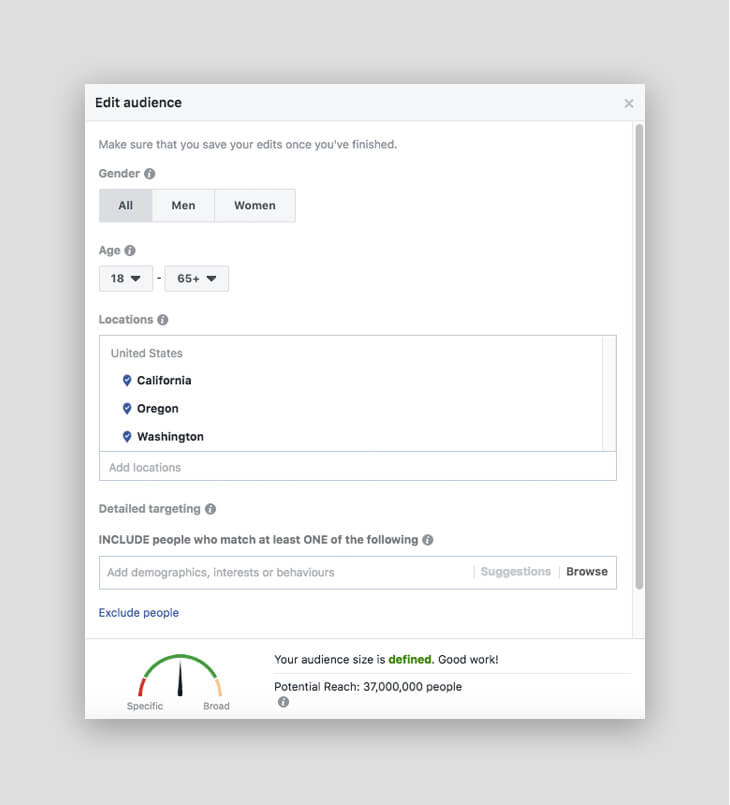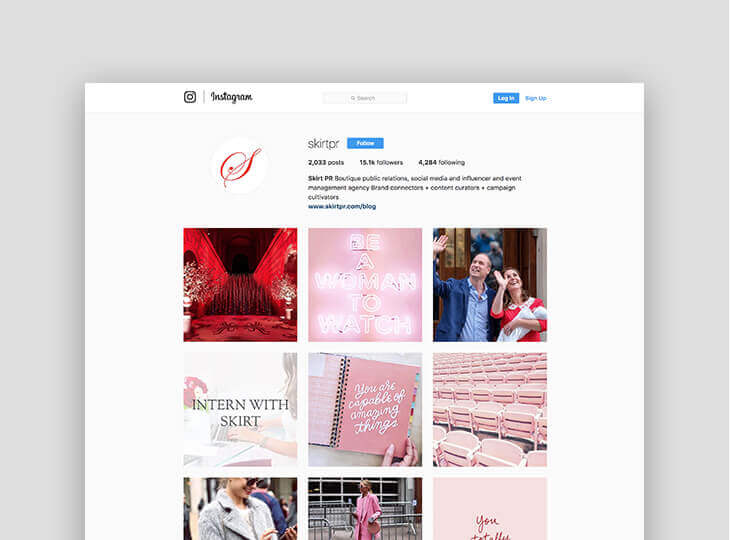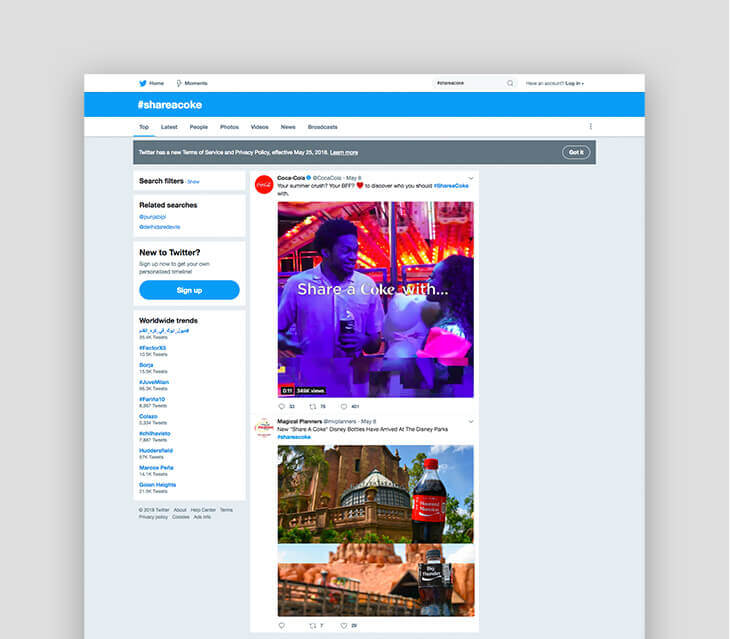Social Media: What Platforms Are Best for Your Business?

Finding the Right Fit for Your Social Media Portfolio
If you run a business, you’ve probably had people tell you, “You need a [insert the newest social media platform here] account.”
Businesses approach us all the time asking, “Do I really need this account? What should I do with it? Will anyone care?”
Our answer? “It depends.”
It’s frustrating, but true. Whether you should be engaging with a certain social media platform depends on your target audience, marketing goals, and industry. But since we know that’s not the answer you really want to hear, we decided to put together a little breakdown of the major social media platforms, their primary audiences, and what features each platform offers to businesses to help them get a leg up on the competition.
Facebook
Facebook has over 2 billion active users worldwide—and many of those users could be your customers. The largest demographic using Facebook is between ages 25–34, but the older demographic tends to engage more via posting and discussions.
Cool Features
- Analytics & Advertising: Having a Facebook business page provides you with statistics on who your audience is and where they're from; this wealth of information means that Facebook also offers highly targeted advertising opportunities. With it's top-tier automation and extensive reach, Facebook could potentially generate more leads for you than any other digital channel.
- “Shop Section”: Did you know you can sell items directly from your Facebook page? This is a great and easy option for simple eCommerce transactions and can reduce the amount of clicks before purchase.
- Call to Action Buttons: You can choose a CTA button for your page that represents a primary objective for your business; ideas for using this space including providing directions to your business or sharing your customer support phone number.
How to Use It
- Engage on the Personal Level: Restaurants and small businesses should use Facebook to directly connect with their audience; create interactive question-oriented posts and polls to encourage your customers to keep the conversation going from the table to the screen; Facebook is also a great place to advertise upcoming events and specials.
- Take Advantage of Hyper-Customizable Promotions: From age to job title to income level and interests, the ability to customize your ads on Facebook is incredible, especially if you already know exactly who your target customers are.

LinkedIn
LinkedIn is a platform that offers a place for professionals to share their work, read interesting articles, and meet other professionals.
Cool Features
- Groups: As a LinkedIn user, you can join “Groups,” aka communities of professionals working in your field that can offer advice, share resources, and help you establish credibility and connections. This is especially useful for new businesses and young professionals just starting out.
- LinkedIn Promotions: These allow you to share content and other visual ad devices with specific segments on LinkedIn. For example, if you wrote a blog post about best practices for law firm marketing, you can target your work toward people who work at law firms in your city and that have the word “Marketing” in their title.
- Lead Generation: When advertising on LinkedIn, you can collect leads through ad campaigns when other members click on your advertisement. These campaigns may take those members to a landing page on LinkedIn that includes a contact form so that they can easily reach out to you.
How to Use It
- Source Recruitment Opportunities: These can be found all over the place within the LinkedIn community. LinkedIn’s Connections tools make introductions easy and allow quick access to important information related to hiring and recruitment.
- Publish and Share Relevant Content: Sharing articles, commentary, and blog posts related to your field helps establish credibility and gain recognition with potential hirees and partners.
- Set Up a Profile for Your B2B Company: While it may seem like only professional service businesses can leverage what LinkedIn has to offer, there’s actually a pretty big market for B2B businesses, as well. According to polling by Regalx, 81% of B2B businesses say they use LinkedIn for product launches, suggesting that it might be one of the most effective places to publish and share this kind of information. It also helps you stay engaged with past clients as well as potential future clients and employees.
Instagram
As one of the fastest-growing social media platforms out there, Instagram has taken the business world by storm. What used to be just a picture-sharing platform now offers numerous ways for businesses to connect and sell to potential customers: businesses can link to products directly from their posts, share blog posts from their stories, receive analytics to discover what content is most successful, and showcase business information (hours, location, phone number, etc.) from their profiles.
Cool Features
- eCommerce options: Instagram itself offers some native options for enabling shopping through their app as long as you have an online catalog to connect to your account. Platforms like BigCommmerce offer catalog functionality that allows you to tie your online store to your Instagram account so users can make purchases straight from one of your posts.
- Instagram Stories: Stories are a great, informal way of connecting with your clients or potential customers; they offers you the chance to give a bit of a sneak peek behind the scenes of your business and “personalize” your brand; this could, in turn, increase the likelihood of users engaging with your ads.
- Tagging, Influencers, and More: Creating a community around your product or business is a great option if you’re wanting organic traffic growth to your profile and, in turn, to your business’s website. The influencer market—wherein businesses engage with “micro-celebrities” on Instagram, often offering free products in exchange for promotion—is booming, but you don’t need to go this far to build your tribe: you can also offer users discounts, chances to win free stuff, and reposts if someone tags your product.
- Post Galleries: You can post multiple photos in a single "Gallery," putting your “grid-friendly” image first in line then other images “below” it. This feature also allows you to share as much as you want without worrying about flooding users’ feeds with what they may see as spammy content.
How to Use It
- Fixate on Aesthetics to Sell Products: Studies suggest that over a third of users purchased a product online after first seeing it on Instagram. Get some professional product photography (we can't emphasize this enough) and get your business profile enabled for “Shopping” (see our first point under “Cool Features” above). From there, familiarize yourself with tagging your products to see how far Insta can take your sales.
- Don’t Forget About Your Profile Grid: Instagram is about more than just posting individual photos that you hope will drum up buzz for your business—think of all your photos as being part of a series. Treat users who visit your profile to a stunning grid of well-planned images with consistent filtering and tone. Companies like SkirtPR have really beautiful grids that match their brand but that also showcase relevant content.

Yelp
Yelp is a city dweller’s best friend for finding the greatest happy hour drinks, the coolest concert venues, and the best ways to get deals on a haircut. While Yelp sometimes gets a bad rap for being a place where angry customers go to rant, it can also be a great channel for business owners to not only address upset customers but to gain visibility, as well.
Cool Features
- Flagging Options: When negative reviews feel extreme, offensive, or outright threatening, consult Yelp’s Content Guidelines; you can report inappropriate content to the Yelp Support Team. This is particularly important if ex-employees, competitors, or generally hateful people are spamming your reviews.
- Photo Galleries: If you have a cool atmosphere, beautiful drinks, or a vintage bar, you can share photos via Yelp to show off what makes your business unique.
How to Use It
- Claim Your Business: As a business owner, you should claim and verify your business listing so you can make sure all the information is up to date. A lot of users rely on Yelp not just to check out a business’s reputation, but to contact the business, find their hours, and see what services they offer.
- Encourage Reviews with Awesome Service: While some customers may be turned off by blatant requests to provide you with reviews online, a Yelp study found that people who experienced good customer service at a place of business were over five times more likely to give a five star review. While "good service" may seem like a subjective art, Yelp highlights three terms that customers regularly mention in positive reviews: "friendly", "nice" and "helpful." If your reviews are lackluster and terms like these are nowhere in sight, it may be time for some introspection and staff coaching.
- Keep Business Info Updated and Stay Engaged: It’s a great idea to post your menu (if applicable), hours of operation (including holiday hours), happy hour and live music event information, and other important tidbits about what you do on your Yelp page so that customers are encouraged to come by and visit.
- Speak Up: Responding to reviews is a great way to show off the real people behind your business—whether you’re replying to a good review or a bad one, this is an opportunity to thank customers, offer help, and, in some cases, apologize for poor service. Responses can help show potential customers that you are real, that you care, and that you want to offer great customer experiences. (As a best practice, if you’re responding to a particularly nasty comment, you may want to get a second opinion on your reply—it’s always a good idea to avoid coming off as catty or defensive.)
Twitter
Twitter is the go-to platform for instant updates, quick shares, and an overwhelming amount of information. One of the greatest things about Twitter is that there is no aesthetic grid to worry about—share information to your heart’s content.
Cool Features
- Worry-Free Posting (For the Most Part): Twitter is pretty forgiving. You had a plan to share a blog post this afternoon but saw a news article relevant to your business that you wanted to retweet? Go ahead and share both—your users will be checking Twitter throughout the day. While some studies suggest that your premium content may be best tweeted in the late morning, Twitter is all about experimentation.
- Hashtags, Followers, and Trends: While “hashtag” is a bit of a punchline in its own right these days, the functionality is still incredibly useful; when you use hashtags appropriately—especially in concert with following appropriate influencers and making use of trending topics—you can connect with like-minded users and prospective customers that may have been hard to reach on other platforms.
How to Use It
- Tweet Often: Since Twitter is basically a general information sharing platform, we see it work for all types of businesses, large and small, from restaurants to legal firms. You can share information at any time of the day or night and gain a competitive advantage for being the first to share a new piece of information.
- Retweet Often: One of our favorite parts of Twitter is that all of your content doesn’t have to be your own—if anything, your audience is expecting you to retweet and share articles from other users and to respond to tweets about topics that relate to you and your business.
- Engage Often to Capture the Attention of Younger Users: Most Twitter users are under the age of 50 and crave instant information and attention. An awesome social media stats page from SproutSocial notes that brands mentioning users goes a long way toward that user's perception and engagement level. If your target audience skews under 50, Twitter will probably work well for your business, but only if you make an effort to reach out and stay regular with your mentions and replies.
- Make Use of Twitter’s Best Features: As noted above, hashtags and trends are some of Twitter’s best features; as a best practice, it’s a good idea to regularly track hashtags, hop on popular event threads as they unfold, and offer perspective and commentary on trending issues in your industry to establish your business’s credibility—just be sure to keep the vibe positive whenever possible.

Still Not Sure Where to Go in the Social Media Maze? Let efelle Help!
Whether you like it or not, your customers—current and potential—are using social media daily; if you’re not taking advantage of all social media has to offer, they’re probably wondering why. Some good news: if you're looking for some extra guidance with social media management, we can help! efelle has been in the online marketing game for over a decade. We offer services in everything from web design and development to branding to search engine optimization and more. Contact us today.